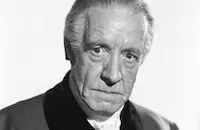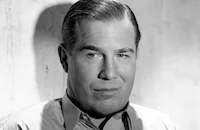The White Sister

Brief Synopsis
Cast & Crew
Victor Fleming
Helen Hayes
Clark Gable
Lewis Stone
Louise Closser Hale
May Robson
Film Details
Technical Specs

Synopsis
A short time before she is to marry banker Ernesto Traversi, Angela Chiaromonte, the daughter of an Italian prince, meets soldier Giovanni Severi after he crashes his automobile into her father's chauffeur-driven car. Inspired by this chance encounter, the innocent and well-protected Angela drags her nursemaid, Mina, to the town carnival, where she again encounters Giovanni. Determined to impress the shy Angela, Giovanni takes her to a cafe and confesses that he has fallen in love with her. Although lovestruck, Angela tells Giovanni about her engagement to the proper, older Ernesto and later writes him a letter declaring the end of their flirtation. Six days before the wedding, however, Giovanni appears at a dance at Prince Chiaromonte's and, after sequestering Angela, forces her to admit that she loves only him. When the prince then catches his daughter kissing Giovanni, he denounces the soldier and orders him to leave. In spite of Angela's protests that Giovanni and she want to marry, the prince, whose own wife deserted him for another man and later committed suicide, insists that she wed Ernesto. Angela, however, refuses to obey her father and runs off to find Giovanni. On her way to Giovanni's residence, her automobile collides with her father's, and the prince dies instantly in the crash. Devastated by her father's death, Angela moves quietly to a small apartment with Mina but eventually is found by Giovanni. Although happy to see Giovanni, Angela is too grief-stricken to resume their romance and sends him away after a few minutes. Soon after, however, news of Italy's entrance into World War I reaches Angela, and before Giovanni is shipped to the front, she eagerly pledges her love to him. Months later, Giovanni, now an ace aviator, is shot down by a German airplane and is presumed dead. Racked with grief, Angela arranges with Father Saracinesca, a longtime friend, to enter a convent. While Angela studies to become a nursing nun, Giovanni recuperates on a German farm from injuries sustained during his crash. When he learns that the German army is in the area, he says goodbye to his benefactors and heads for the Swiss border. Giovanni is soon captured by the Germans, however, and is sent to a prisoner-of-war camp. After two years in the camp, Giovanni, who has been living in solitary confinement because of his repeated escape attempts, sneaks out during a cholera epidemic in a fellow prisoner's body bag. Giovanni flies a stolen German plane to safety, then begins his search for Angela. When he finally tracks Angela to a military hospital, he is stunned to discover that she is now a nun. Angela, too, is shocked by Giovanni's return but, in spite of her resurging passions, insists that her religious vows are unbreakable. Convinced that Angela still loves him, Giovanni tries to persuade her away from the church but, when he sees her praying during an air raid, realizes that she no longer belongs to him. Soon after Giovanni leaves the town, he is hit by German fire, and then dies in Angela's loving arms.

Director

Victor Fleming
Cast

Helen Hayes

Clark Gable

Lewis Stone
Louise Closser Hale

May Robson

Edward Arnold
Alan Edwards

Nat Pendleton
Sarah Padden
Crew

Film Details
Technical Specs

Articles
The White Sister (1933)
Gable had benefited from MGM production chief Irving G. Thalberg's interest in his career, but when Thalberg took an extended leave from the studio for health reasons, he left the actor to fend for himself. Gable knew he was out of place in the story, which had been a huge hit in 1923 for Lillian Gish and Ronald Colman, and at times almost seemed tongue-tied in Hayes' presence. Although the two got along perfectly well off-screen, she would later note that he kept trying to hide his big, scarred hands from her, embarrassed by his working class background. He would be even more embarrassed when his first wife and acting coach, Josephine Dillon, published a series of open letters to him about his acting in the fan magazine Motion Picture. Her complaint that in The White Sister he did "those funny things with your mouth to make your dimples show" didn't fit his he-man image any better than the film's intense romanticism.
Gable wasn't the only one suffering from Thalberg's absence. Writer Donald Ogden Stewart, who had made his name with a series of comic novels in the '20s, had recently earned Thalberg's favor by re-writing the dialogue for Smilin' Through (1932) -- a big hit for Thalberg's wife, Norma Shearer -- and an uncredited re-write on Red Dust (1932). As a result, he found his position at the studio and his salary elevated. But with Thalberg away, he too had to work with less sympathetic producers. Stewart actually enjoyed The White Sister's producer, Hunt Stromberg. He was amused at the way Stromberg would read a scene, pace the floor while waving his riding crop and ask if "that dumb Scranton miner" would like it. Stewart even tried to get a miner to visit the studio, but none of his friends in that part of the country could find one dumb enough to fit Stromberg's image. Although the humorist felt miscast working on such a sentimental story, he couldn't help getting caught up in the romance and, particularly, the chance to bring his own World War I experiences to the screen. He even asked to play a small role in the film, the rear end of a horse, though he would later say the casting was strangely prophetic.
Problems started when it came time to shoot the final scenes of The White Sister. Hayes decided she didn't like them as written and insisted that her husband, writer Charles MacArthur, be brought in for re-writes. Since she was still riding high on the success of The Sin of Madelon Claudet(1931), written by MacArthur, and A Farewell to Arms (1932), she got her way. Stewart was disappointed but had to admit that MacArthur wasn't doing anything to him that he himself hadn't done to other writers at the studio. When he saw the film, however, and realized how little it resembled the script he had labored over so lovingly, he vowed never to take another film assignment seriously.
The White Sister met with mixed reviews, though most critics conceded that it had outstanding production values, but turned a profit. That wasn't enough for Gable, however, who grew more and more rebellious when faced with other roles he considered wrong for him. Eventually, his behavior would lead studio head Louis B. Mayer to punish him by shipping him to a lesser studio for a minor comedy -- It Happened One Night (1934) -- that made him a superstar.
Producer: Hunt Stromberg
Director: Victor Fleming
Screenplay: Donald Ogden Stewart, based on the play by Walter Hackett from the novel by F. Marion Crawford
Cinematography: William Daniels
Art Direction: Cedric Gibbons
Music: Herbert Stothart
Cast: Helen Hayes (Angela Chiaromonte), Clark Gable (Lt. Giovanni Severi), Lewis Stone (Prince Guido Chiaromonte), Louise Closser Hale (Mina), May Robson (Mother Superior), Edward Arnold (Monsignor Saracinesca), Alan Edwards (Ernesto Severi), Nat Pendleton (Corporal), Donald Ogden Stewart (Rear End of a Horse).
BW-106m.
by Frank Miller

The White Sister (1933)
Quotes
Trivia
Notes
According to an August 1932 Hollywood Reporter news item, Leonard Praskins was hired by M-G-M to adapt F. Marion Crawford and Walter Hackett's play. Crawford is given onscreen credit for her original novel, but not credited for co-writing the play with Hackett. October 1932 Hollywood Reporter news items announced first that John Lee Mahin was writing the film's screenplay, and then that Praskins was co-writing the script with credited writer Donald Ogden Stewart. The exact nature of these uncredited writers' contributions is not known.
In December 1932, Hollywood Reporter announced that Clark Gable had won the role of "Giovanni" from Douglas Fairbanks, Jr. Leo Carrillo was first cast in the part of "Father Saracinesca," according to a Hollywood Reporter news item. Pre-production news items in Film Daily and Hollywood Reporter list Richard Bennett, Anthony Jowitt, Sidney Toler and Sidney Blackmer as possible cast members, but none of those actors appeared in the released film. According to modern sources, Gable wore a moustache for the first time in this picture.
Crawford and Hackett's story was first filmed in 1915 by Essanay. This silent version was directed by Fred E. Wright and starred Viola Allen and Richard C. Travers (see aboce). In 1923, Henry King directed Lillian Gish and Ronald Colman in an Inspirational Pictures version of the same story.















